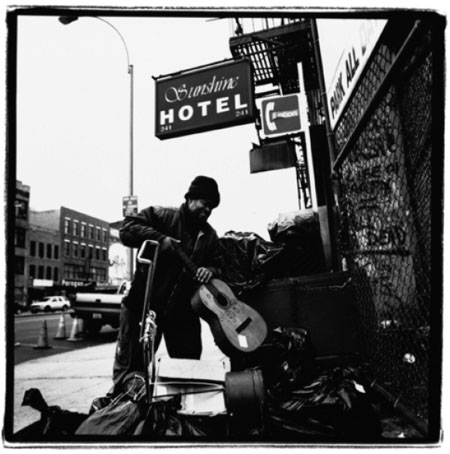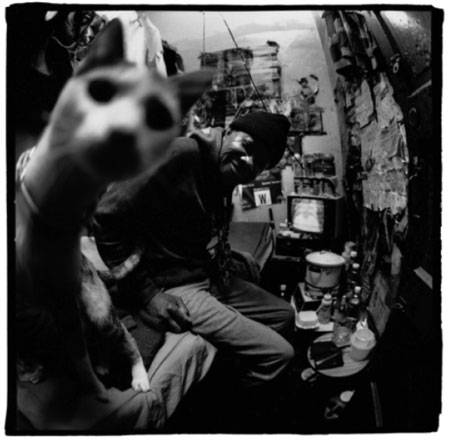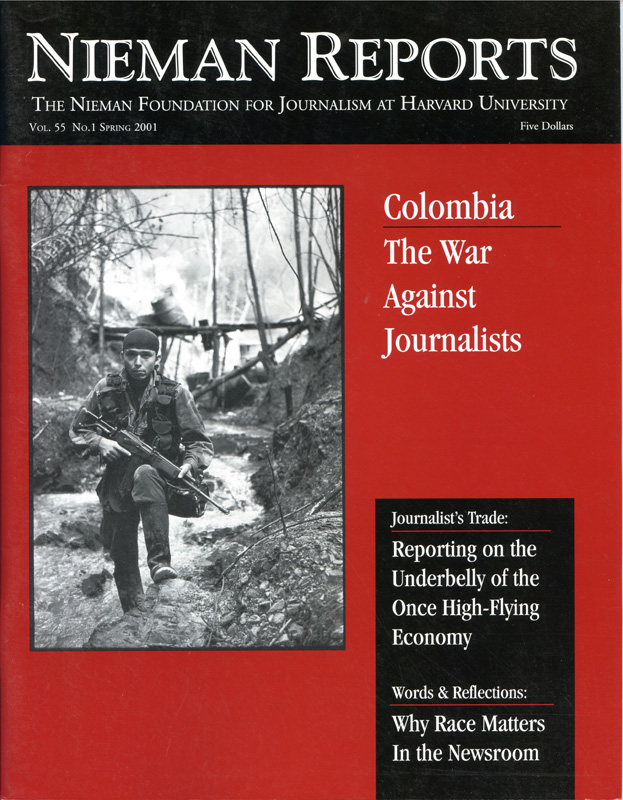
A man sits in one of the cubicles of the Providence Hotel, a lodging house in New York City’s Bowery. Two hundred men sleep on four floors of the residence. Photo by Harvey Wang.©
The Bowery, the world’s most infamous skid row, has long fascinated me. Barber shops, employment agencies, liquor stores, tattoo parlors, and cheap restaurants once lined this New York City street. During its heyday, between 25,000 and 75,000 men slept on the Bowery each night. Today, gentrification has transformed the 16 blocks that make up the Bowery, just like it’s remade much of New York City. All that remains of the old Bowery are a mission, a single liquor store, and seven “lodging houses,” which are home to less than 1,000 men.
Inside these lodging houses, or flophouses, men can still get a cubicle with a bed and a bare bulb for as little as $4.50 a night. In the midst of Manhattan’s real-estate boom, as rents for studio apartments climb to $2,000 a month, the flophouses’ inhabitants struggle to scrape by on disability checks or the proceeds from redeemed cans. Many inhabitants are drug or alcohol addicted and have lost or been rejected by their families.
By documenting the flophouses and the men who inhabit them, my coauthors and I hoped to shine a light on this hidden corner of America. “Flophouse: Life on the Bowery” is my second book collaboration with the radio documentarian David Isay. This time, he had a coauthor, Stacy Abramson. The book was born after David and Stacy produced a radio documentary on the Sunshine Hotel, which aired on National Public Radio in 1998.
“Flophouse” documents life inside the Sunshine Hotel, as well as three other flophouses. The book is comprised of 50 black-and-white portraits of the flophouses’ residents. Each portrait is accompanied by a short oral history, which was transcribed from interviews done by David and Stacy. With most of the residents, David or Stacy conducted an interview first, and I would listen in order to get a sense of the subject’s story.
Afterward, I would make a portrait of the flophouse resident, usually in a place of his own choosing. Sometimes I was drawn to a particular place within the hotel, like the shower room or a fire escape, and would suggest to the subject that we shoot there. Dispersed throughout the book are color photographs of the flophouses themselves—of their walls, windows, corridors—which are included in order to give viewers a better sense of place. Though I almost always shoot in black and white, I felt that these bleak interiors would be better portrayed in color.
I strive in my work to be as honest as possible, and I tried to be objective when making the pictures in the book. Though the residents are responding to me and are active participants in the picture-making process, I hoped that I would remain “invisible.” The pictures are not about the photographer, like so much of the celebrity photography that appears in magazines. And the work is not about whether flophouses or their inhabitants are good or bad. I wanted readers to realize that they are not so different from residents of these hotels who, for the most part, have lived hard or unlucky lives. The main point was to document the humanity behind these forgotten façades, showing how some New York City residents are living, even as much of America revels in its current prosperity.
Photos by Harvey Wang, text from “Flophouse: Life on the Bowery,” published by Random House, 2000.

Robert Rushin/Evicted from Room 14L
Sunshine Hotel, 241 Bowery
“I feel like a lot of people look down their nose at you because you live in the Bowery and you’re a ‘bum.’ It disturbs me. I’m an artist. If you don’t have a thrill about what you’re doing, it’s just marking time. It’s not music. It’s not music when you hit every note and just have technical facility. It’s music when you have the spirit, when you say something that you feel. So that’s the basic message I’ve learned: The only real success in life is inner success.”

Tony Bell/Room 23A
Sunshine Hotel, 241 Bowery
“This is where I hang my hat. I put up the pictures to cover the dirt on the wall. Never had a paint job in twenty years. I’m sorry to put it that way, but I asked them and they never give it to me. But I appreciate that the landlord lets me keep my junk in here. It’s better than nothing.”
Harvey Wang is a director and widely published photographer. His other books are “Harvey Wang’s New York” (W.W. Norton & Co., 1990) and “Holding On: Dreamers, Visionaries, Eccentrics and other American Heroes” (with David Isay, W.W. Norton & Co., 1995). He received an Emmy Award for his work on WNET’s “City Arts” in 1996 and 1998.



